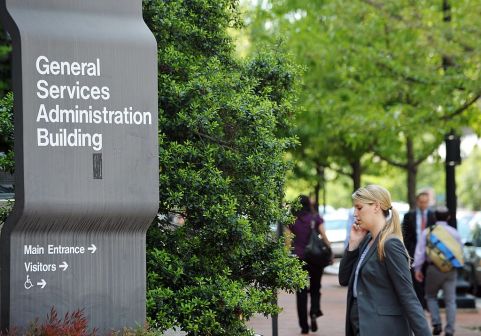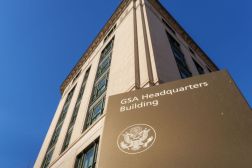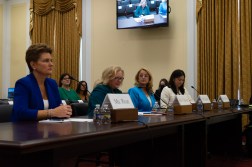Clare Martorana and Raylene Yung call for continued congressional support for TMF

The federal Technology Modernization Fund recently celebrated five years of operation, during which time the fund has invested nearly $700 million in 38 investments across 22 federal agencies.
Despite the success the fund has seen in those first five years, outside of a $1 billion injection it received under the American Rescue Plan, it’s been a bumpy ride at times for the leaders of the TMF in seeking funding from appropriators on Capitol Hill.
In fact, in years past, some appropriators have tried to pass appropriations without any new funding for the TMF. And during the fiscal 2023 budget cycle, the Office of Management and Budget requested an additional $300 million for the TMF, but lawmakers only granted $50 million.
While it remains to be seen if appropriators will fund the TMF in fiscal 2024 at its full request of $200 million, Federal CIO Clare Martorana told FedScoop the fund has proven itself as an alternative model to drive modernization that delivers near-term impact in the federal government outside of the otherwise snaillike two-year budget cycle.
“There’s some data out in the marketplace done by large consulting companies that talk about the failure rate of IT projects. And it’s pretty significant — projects over $6 million with a significant failure rate. And that’s not acceptable to us. And as technologists, we know how to do this differently. And the way that you do it differently is the way that we’ve designed TMF,” Martorana explained during an interview on the Daily Scoop podcast.
Largely, what she means by that is having technologists and other key experts embedded throughout the TMF process to “interrogate” project plans and the agency leadership managing them, and requiring them to deliver incrementally.
“We have technologists in the [TMF program management office], we have technologists and very seasoned, competent board members who are interrogating the project, making sure that it has the great foundational best practices built into it, right? That the team is capable of doing the right procurement, that they have a lot of, you know, support from the agency leadership, mission leadership, the CFO team,” all of which are, “really critical,” Martorana said.
And instead of issuing money to an agency team and waiting years to check in on progress, the TMF Board and PMO maintain close oversight of projects, requiring those teams to meet milestones before delivering money to them.
“We release money based on milestones and delivery and impact,” Martorana said. “And I think that this is actually a really great model to show our colleagues on the Hill, that we know how as technologists to deliver with excellence.”
By starting small and working incrementally, it gives agencies an opportunity to kickstart their most-pressing modernization initiatives, which they can then down the road work to complement and amplify during the larger appropriations process. Martorana referred to the TMF as “an opportunity to do some of that short-term, really catalytic investment — that it will take a little bit longer through the normal budget process, or possibly something’s [already] in flight in the normal budget process, and we have the ability to accelerate it.”
Speaking alongside Martorana, TMF Executive Director Raylene Yung told FedScoop she’s “excited for the role that the TMF can play in often kind of catalyzing a major investment or sort of setting up the first few years and first few phases of something that hopefully lasts longer and leads to much more long term impact.
Yung believes that over time, more best-in-class use cases will come out of the fund that will open appropriators’ eyes to the power of the model.
“Although many of our investments are still actively underway, in the next five years, we’ll certainly see a lot more impact and results being delivered, especially given that many of our investments, as we’ve mentioned, were first made in the last year, and we’ve really ramped up that rate of investment,” Yung said.
Meanwhile, there’s a huge demand for more, Yung said. “In total over the lifetime of the fund, we’ve received and reviewed more than 220 different proposals totaling over $3.5 billion in demand. And just since the passage of the [American Rescue Plan] alone, we’ve received more than 160 proposals totaling over $2.9 billion. So yeah, the volume and demand really have been tremendous.”
“We already know and have evidence to see that our investments are succeeding. Agency projects are delivering better outcomes for the American public in easier, faster, cheaper and more secure ways.”
The TMF can also serve as an opportunity to show leaders across the federal government and on Capitol Hill that the bureaucratic process is often not an optimal environment for the innovation and customer service delivery agencies most need, Martorana suggested.
“Our bureaucratic processes sometimes don’t support the agility that is needed for technology teams to potentially pivot to learn more when they’re doing research with their users, and taking a slightly different tact from their technical architecture,” she said. “So we really think that TMF is going to continue to have use cases that are really best in class and will help continue to show our colleagues on the Hill and frankly across government and our federal IT teams what good looks like and how we continue to deliver with excellence for the American public and be great stewards of the taxpayer dollar.”
Listen to the full interview with Martorana and Yung on the Daily Scoop podcast.






